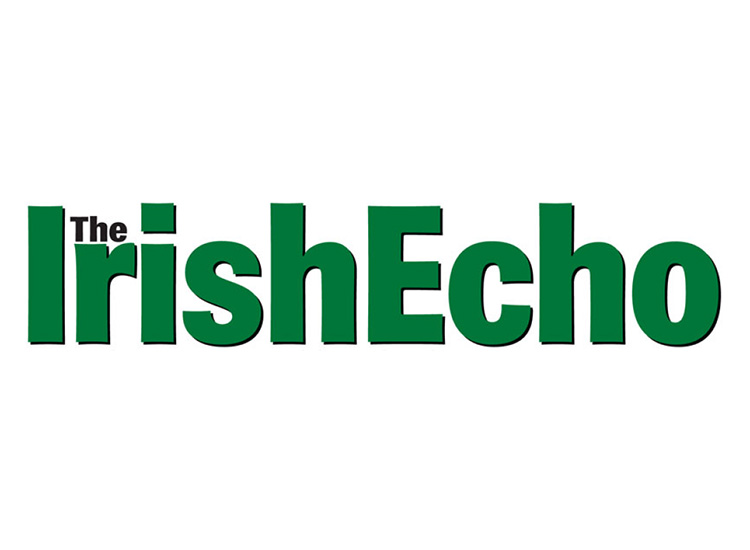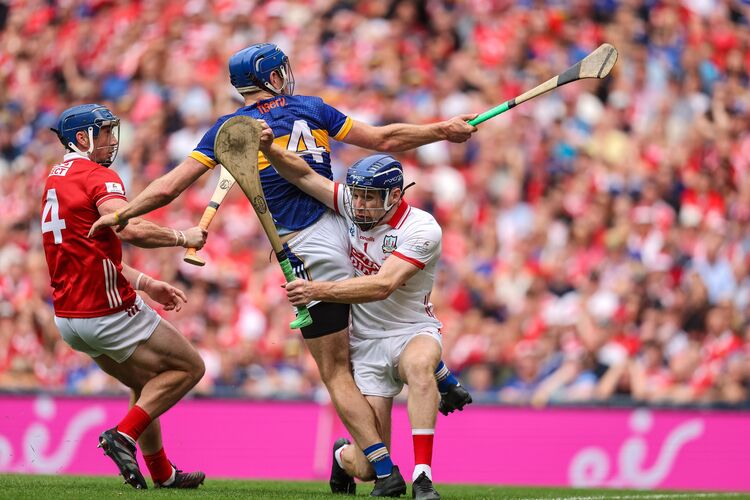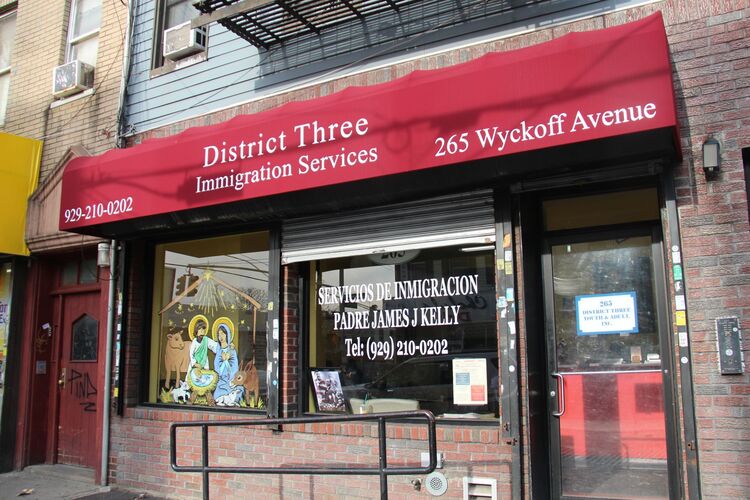[caption id="attachment_70011" align="aligncenter" width="600" caption="Cork's Darren Sweetman and Paul O'Brien of Waterford battle for aerial supremacy at Pairc Ui Rinn Saturday evening."]
It was announced with great fanfare the other week that several major landmarks around the world will turn green on St. Patrick’s Day. A nice bit of publicity, the type of symbolic gesture which will get Ireland mentioned on local news from New Zealand to Dubai, from New York to South Africa. For a few seconds, our national holiday will get talked about by the media in these diverse locations, the Irish people will get a metaphorical pat on the head and everybody will move quickly on. Meanwhile, the government will celebrate this as if it’s going to promote tourism and help the economy. Which, really, it won’t.
When stuff like this happens, those of us stationed far from home can only look on and shake their heads at the pointlessness of these gestures. The vast majority of people who participate in St. Patrick’s Day festivities in America and all other parts of this planet never bother to visit Ireland. No matter how many times they dye the Niagara Falls or bathe the Empire State Building in some nauseating shade of green light, that is the awful truth. At least part of the reason these celebrants never turn into tourists is because the country never actually sells these people the most unique aspect of Irish culture.
At Parnell Park last weekend, it’s charitably estimated around 800 people watched Munster take on Leinster in the Railway Cup. That’s just the kind of attendance a clash between those two provinces would have attracted in rugby in the early 1990s, before the oval ball authorities learned to aggressively and smartly market their sport in the modern era. The rugby crowd deserve kudos for that, the same way the GAA deserves to be panned for not maximizing its own resources.
All of the sparsely attended Railway Cup games from last weekend could and should have taken place outside Ireland. Imagine three games in the Super Dome in New Orleans over the St. Patrick’s Day weekend. Picture the scene in Chicago if the games too place at any of the college or professional stadia in and around that city in mid-March. Oh, I hear you say, they tried that before. Yes, they did in Boston a few years back. They tried it in the middle of October. Memo to Croke Park. In Boston and the rest of America, all that matters in that month is baseball and the NFL. Nothing else gets a look in.
The GAA need to come back to America but properly prepared, and at the only time of year people ever give Ireland a second thought – March. They must come ready with the hard sell too. Every television station in whatever city they pitch their tent in must be handed a prepackaged five minute highlight reel of Gaelic football and hurling, soundtracked by U2. I’m sure the band that allowed ESPN to sell soccer’s World Cup to America using its music won’t mind the GAA doing the same. From New Hampshire to New Mexico, jaws would drop at a few minutes of the finest moments from any recent hurling All-Ireland.
The GAA would also have to get some of its best and brightest onto local television and radio, promoting these fixtures. In the month of March, anybody with an Irish accent is liable to turn up in the American media so it won’t be that hard to get Sean Og or Bernard Brogan in front of a few cameras to build up the public interest and to draw a crowd. And, best of all, the government should be underwriting the whole thing as a way of drumming up tourism. They don’t have the money? How much is wasted every year sending politicians to parades around the world, appearances that yield no return?
Of course, getting the government to pay may be difficult given Leo Varadkar, the current Minister for Transport, Tourism and Sport, knows about as much about hurling as Xi Jingping, the Vice-President of China who had a few handy swings in Croke Park last week. Varadkar and his handlers need to learn something fast. The GAA is all we have that makes us different from other countries now and this is what we should be selling and using to attract people to the country.
Tens of thousands of tourists from all over the world pass through Ireland every summer without ever discovering the joys of hurling and the, ahem, different fruit that is Gaelic football. It’s disgraceful that county championship matches all over the country are sparsely attended. In part, this because these fixtures are so badly promoted that only the true devotees generally know when and where they are on. What a missed opportunity.
An American family could be staying in the Imperial Hotel on Cork’s South Mall yet be oblivious to the fact that they could walk down to Pairc Ui Rinn to see a hurling match on a Saturday night, to enjoy a true cultural experience for a fraction of what they pay to attend NBA or baseball games. I’ve never met a foreigner yet who went to Croke Park or Pairc Ui Chaoimh and wasn’t blown away by what they saw. Even bad Gaelic football matches, and lord knows we have enough of those, are a novel event for outsiders. Instead of investing in the international appetite for paddywhackery by shining green lights on fancy buildings, the government should wake up to the immense national asset in its midst.
“When attempting to describe the GAA to friends back home in Boston, I like to use the following comparisons,” wrote Steve Coronella, an American who writes for the Boston Globe from Dublin, a few weeks back. “Imagine an organisation and a set of games with the historical pull of baseball, the frenetic energy of playoff hockey, and the hysteria now building toward Sunday’s Super Bowl between the Patriots and the Giants. That would be the GAA in Ireland, I tell my Boston pals.”
What a pity more of his pals couldn’t be shown this by our own government.







